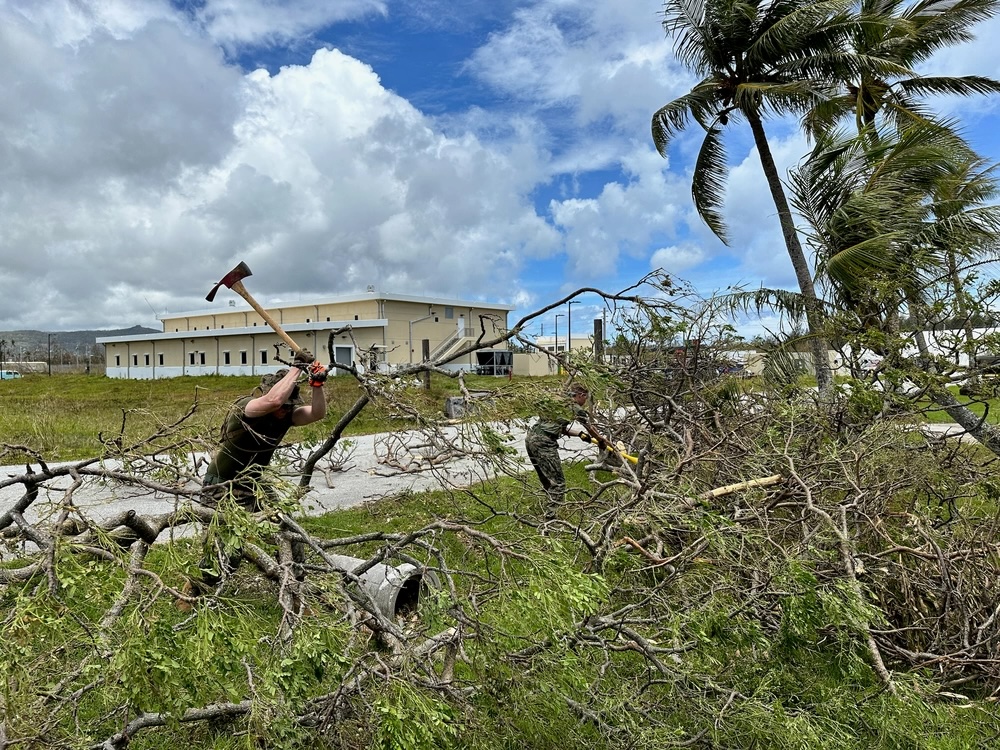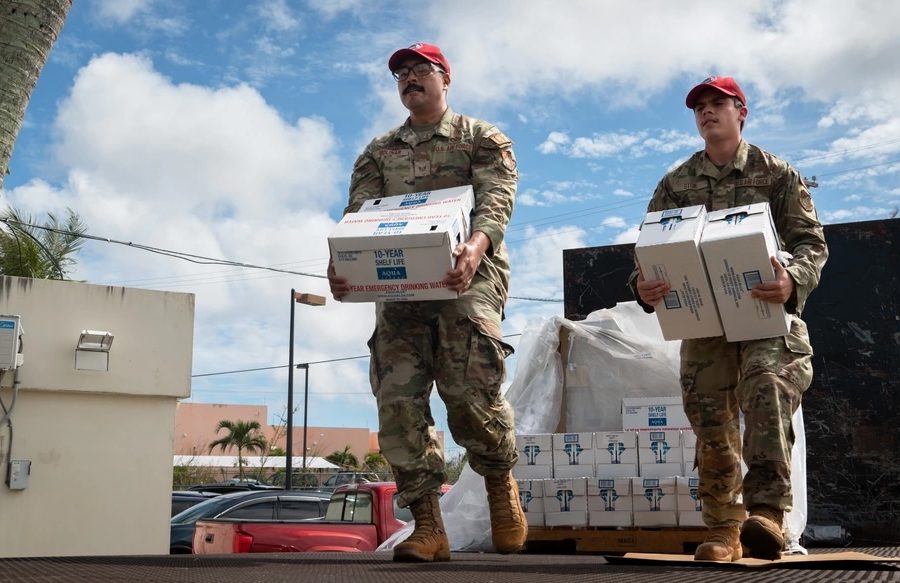A year after Typhoon Mawar hit Guam last May, the Air Force estimates it will need nearly $9.7 billion to rebuild and improve its facilities on the island. The amount is more than double the $4.389 billion spent to date rebuilding Tyndall and Offutt Air Force Bases in Florida and Nebraska after those installations were struck by a hurricane in 2018 and flooding in 2019, respectively.
“This is on a scale close to twice what the natural disaster recovery requirement was when a [Category] 5 hurricane directly hit Tyndall Air Force Base in 2018 and then Offutt of course for the flood,” Lt. Gen. Tom D. Miller, deputy chief of staff for logistics, engineering, and force protection, said May 1 at a Senate Appropriations’ Subcommittee hearing on military construction.
The repairs are so expensive that the Air Force can’t cover the cost out of its normal budget, he told subcommittee chair Sen. Kyrsten Sinema (I-Ariz.).
“In my view, senator, there’s no ability for the Air Force baseline budget to absorb the level of magnitude of the disaster that happened from this typhoon,” Miller said. But a supplemental bill could provide that funding and the flexibility to rebuild projects in the right sequence, an approach that has paid off with the Tyndall and Offutt recovery programs, the general said.
“Supplemental, I think, is the only path to be able to absorb this,” he said.

Mawar hit Guam on May 24 with 140 mile per hour winds, two feet of rain, a storm surge, and flooding, which downed trees, shut down utilities, and collapsed buildings.
“There was debris everywhere, sheet metal awnings were crumpled like a piece of paper, power lines were down, traffic lights were facing every which way, and thick jungles were stripped bare and looked like east Tennessee in winter,” Lt Col. David Seeman, commander of the 506th Expeditionary Air Refueling Squadron, said in a June 2 press release.
Airmen managed to clear the airfield of debris the same day the storm subsided on May 26. By October, much of the debris across Andersen Air Force Base had been picked up, but the road to recovery is long.
“The damage sustained at Guam, specifically Andersen Air Base and Joint Region Marianas, during Typhoon Mawar was extensive,” Air Force spokesperson Laurel Falls told Air & Space Forces Magazine. “Over 90 DAF structures were damaged, with most in need of significant repairs due to high winds and sustained rainfall.”
The current requirements include 42 military construction (MILCON) projects totaling $7.9 billion, which includes planning and design, Falls explained. Another $1.3 billion is required for facility sustainment, restoration, and modernization (FSRM).
“We are not simply restoring facilities back to their previous specifications and requirements from the1960s, ‘70s, or ‘80s,” Falls said. “We need to rebuild with increased resiliency against future storms, as well as increased capacity and capability.”
The Air Force is coordinating the rebuild with the Office of the Secretary of Defense and U.S. Indo-Pacific Command, but the exact nature of the long-term recovery plan and the breakdown of total workload and resource requirements, including all MILCON, FSRM, procurement, research, and maintenance bills, are still in the works, Falls said.
While the Air Force estimates it needs $9.7 billion for restoring its projects on Guam, the wider Defense Department may need as much as $50 billion, subcommittee ranking member Sen. John Boozman (R-Ark.) said at the May 1 hearing.
“A bill like that cannot be absorbed within the traditional MILCON program,” he said. CQ Roll Call reported later that Boozman received the estimate from Pentagon officials in an earlier briefing, though Sen. Jack Reed (D-R.I.), chairman of the Senate Armed Services Committee, told CQ he plans on double-checking that estimate.
Other critical infrastructure on the island include a $580 million repair for a Navy helicopter squadron hangar and a $600 million repair for a breakwater that allows sea traffic in and out of Apra Harbor, a deep-water port on the island’s western side.
“If that breakwater fails, then our ability to bring the things that we need … to build the infrastructure to defend Guam is compromised as well,” Assistant Secretary of Defense for energy, installations, and environment Brendan Owens said at the hearing.
Military construction costs do not appear to be shrinking any time soon: the year 2025 budget requests $17.5 billion, a five percent increase over last year’s request, Boozman said at the hearing.
“It continues the trend of having more expensive projects rather than a higher quantity of projects,” he said. “Unfortunately, this isn’t a surprise as inflation continues to drive up costs and we continue to see larger and more complex projects in the budget.”
But a backlog of projects continues to grow, and the unfunded MILCON priority list—the requests the Pentagon wants but could not fit in its budget—exceeds $7 billion, the highest ever submitted, Boozman said.
